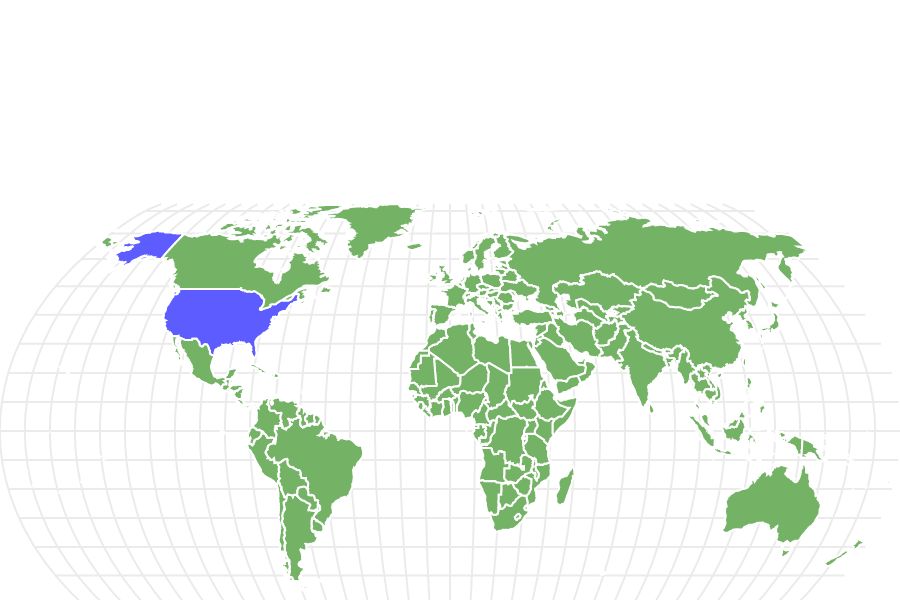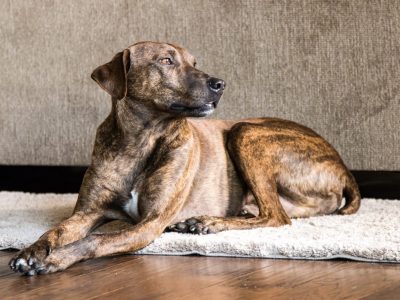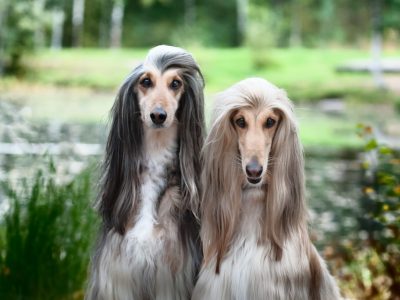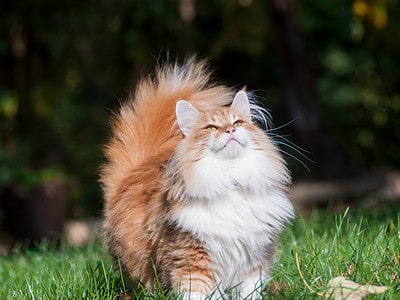English Crested Guinea Pig
Cavia porcellus
Contrary to their name, English crested guinea pigs did not originate in the UK
Advertisement
English Crested Guinea Pig Scientific Classification
- Kingdom
- Animalia
- Phylum
- Chordata
- Class
- Mammalia
- Order
- Rodentia
- Family
- Caviidae
- Genus
- Cavia
- Scientific Name
- Cavia porcellus
Read our Complete Guide to Classification of Animals.
English Crested Guinea Pig Conservation Status
English Crested Guinea Pig Facts
- Name Of Young
- Pups
- Group Behavior
- Herd
- Fun Fact
- Contrary to their name, English crested guinea pigs did not originate in the UK
- Most Distinctive Feature
- Furry crown or crest on their head
- Gestation Period
- 58 to 72 days
- Temperament
- Social
- Age Of Independence
- 2-4 months
- Litter Size
- 5 to 15
- Predators
- Dogs, Cats, Birds of prey, weasels
- Diet
- Herbivore
- Lifestyle
- Diurnal
- Favorite Food
- Timothy hay
- Origin
- South America
- Group
- Herd
English Crested Guinea Pig Physical Characteristics
- Color
- Brown
- Black
- White
- Dark Brown
- Orange
- Skin Type
- Fur
- Lifespan
- 5-7 Years
- Age of Weaning
- 1-3 weeks
View all of the English Crested Guinea Pig images!
The English Crested Guinea Pig is one of the smallest of this breed, inhabiting areas of Europe and America.
English Crested Guinea Pig Summary
The English Crested Guinea Pig is one of the smallest of this breed, inhabiting areas of Europe and America. This breed is primarily kept as a pet, as it was bred for captivity. But in the wild, they thrive in rocky areas or savannas and feed on hay, vegetables, and plants that they can find. These docile animals make spectacular pets.
4 Incredible English Crested Guinea Pig Facts
- They have a bush of hair on their heads, hence the name “crested.”
- There’s a common myth that “English” in its name came from the fact that they first originated in England. This is, in fact, false.
- They’re cousins of the American crested guinea pig, whose crest is of a different color than its body, unlike the English crested guinea pig.
- Their crest is sometimes called the “grape holder” as slang, owing to the crest’s rosette shape.
English Crested Guinea Pig Scientific Name
Cavia porcellus
Scientifically known as Cavia porcellus, this breed of guinea pigs primarily found in the US or Europe. The “crest” in its name comes from the extended fur on its head. While the actual origins of this name are unknown, this breed is among the 14 breeds of guinea pigs across the globe that have been domesticated. Guinea pigs, in general, all originated in South America before becoming domesticated and spread around the world. They’re descendants of a rodent called the Cavia cutleri.
English Crested Guinea Pig Appearance

When born, the pups weigh between 2 and 4 ounces on average. Unlike most
mammal
babies, they are born with a full fur coat and can walk and see directly after birth.
©Wawaweaw/Shutterstock.com
Also known as the self-crested guinea pig, English crested guinea pigs have a fur crest on top of their heads, which is the same color as the rest of their bodies. This remains their most distinct physical trait. The crest is shaped like a rosette, positioned so that it looks like the guinea pig is wearing a crown. Other than the crest, this breed is often short-haired. This guinea pig breed usually has many colors and patterns on its body, but the crest always matches them. Common colors are orange, brown, black, and white.
They might often be mistaken for the American crested guinea pig. The best way to distinguish these 2 breeds is to look at the crest. American crested guinea pigs have a white crest no matter what color their coat is, while English crested guinea pigs have a crest that is the same color as the rest of their coat.
In terms of size, this breed is relatively smaller than other breeds of guinea pigs at about 8-10 inches in size when fully grown and weighing between 1-3 lbs.
English Crested Guinea Pig Behavior
They are a docile animal with a calm personality, making them friendly indoor pets. They can be shy at first, but once they get used to their environment, they can be very friendly with their owners.
In the wild, they usually prefer to live in groups called herds. They are very social animals, so if you wish to keep them as pets, it’s a good idea to keep them in pairs. The animal is quite active, whether domesticated or in the wild, and it is recommended to let the guinea pig out daily to play with it and allow it to exercise.
English Crested Guinea Pig Habitat
Domesticated more than 500 years ago, their habitat generally varies depending on where they are kept. In the wild, they thrived in the mountains of South America.
They are fairly active animals, so their domestic enclosure should have enough space for them to run around and exercise, and they should be given some time out of their cage to socialize.
Unlike most other rodents, these animals are primarily diurnal (meaning they are active during the day) but can often be seen playing or eating in the middle of the night as well.
English Crested Guinea Pig Diet
They usually require a diet containing large quantities of vitamins and minerals. Timothy hay is a special kind of hay that is particularly good for guinea pigs.
What do they eat?
The English crested guinea pig is a herbivore whose diet is based on plants, mainly grass, fruits, and vegetables, when out in the wild.
When domesticated, their best diet is usually timothy hay, a chewy type of hay that is good for their digestive systems and teeth. They should also be fed leafy vegetables such as kale, lettuce, spinach, and various fruits.
What eats them?
In the wild, large animals such as weasels or wolves, or birds of prey commonly prey on the English crested guinea pig. When kept indoors, the most prominent threat is domestic dogs and cats. It should also be noted that humans traditionally eat guinea pigs in South America.
English Crested Guinea Pig Predators and Threats
As mentioned earlier, they are susceptible to predation by mammals and birds that feed on smaller animals. These rodents hide in underground burrows or behind bushes when out in the wild. The biggest threats to domesticated English crested guinea pigs are dogs and cats.
English Crested Guinea Pig Reproduction
They usually have around 5 babies (or pups) at once. But the litter size can even be up to 15 pups. Their average gestation period is 58 to 72 days, and the mother carries the young in her womb.
The males usually reach maturity when they’re about 2 to 4 months of age, while females are generally mature as soon as they hit the two-month mark.
Guinea pigs usually breed in the spring as this is the most fertile time for both males and females, but they can breed all year round. The female is most fertile for 6-11 hours of the day, and the rodents usually breed during the night.
A female can give birth to about 3 to 5 liters a year.
English Crested Guinea Pig Babies
When born, the pups weigh between 2 and 4 ounces on average. Unlike most mammal babies, they are born with a full fur coat and can walk and see directly after birth. They usually nurse from their mothers in the first week after birth and then slowly start to eat solid food. After about three weeks, they stop nursing entirely and eat the same diet as their parents.
English Crested Guinea Pig Lifespan
Their average lifespan is anywhere between 5 to 7 years. Nevertheless, this depends on the environment that they live in and their diet. More often than not, the females outlive the males of this breed.
As these animals age, they can suffer from several common ailments. Some of these include:
- Pneumonia
- Vitamin C deficiency
- Mites
If you keep one as a pet, you should look out for its coat’s texture, droppings, and teeth for signs of sickness, alongside regular vet visits to ensure it stays healthy.
English Crested Guinea Pig Population
The exact number of these animals around the world is unknown. However, their population is not under threat because they are kept primarily as domestic animals.
Similar Animals
View all 117 animals that start with EEnglish Crested Guinea Pig FAQs (Frequently Asked Questions)
Are English crested guinea pigs carnivores, herbivores, or omnivores?
English crested guinea pigs are herbivores; they feed primarily on hay, grass, vegetables, and fruits.
If kept as pets, do English crested guinea pigs like being held?
English crested guinea pigs are often very shy animals at first. But once they warm up to your voice, they’re likely to be very receptive toward being held.
What is the difference between American crested guinea pig and English crested guinea pig?
The coat and crest of an English crested guinea pig are the same color. On the contrary, the crest of an American crested guinea pig is usually white.
How much does an English crested guinea pig cost?
They usually cost $10-20 and are low-maintenance animals.
How big do English crested guinea pigs get?
English crested guinea pigs are relatively small compared to other breeds, only reaching about 8-10 inches when fully grown.
Thank you for reading! Have some feedback for us? Contact the AZ Animals editorial team.
Sources
- , Available here: https://www.animalfunfacts.net/pets/guinea-pigs/677-english-crested.html
- , Available here: https://guineapigs.fandom.com/wiki/Crested


















